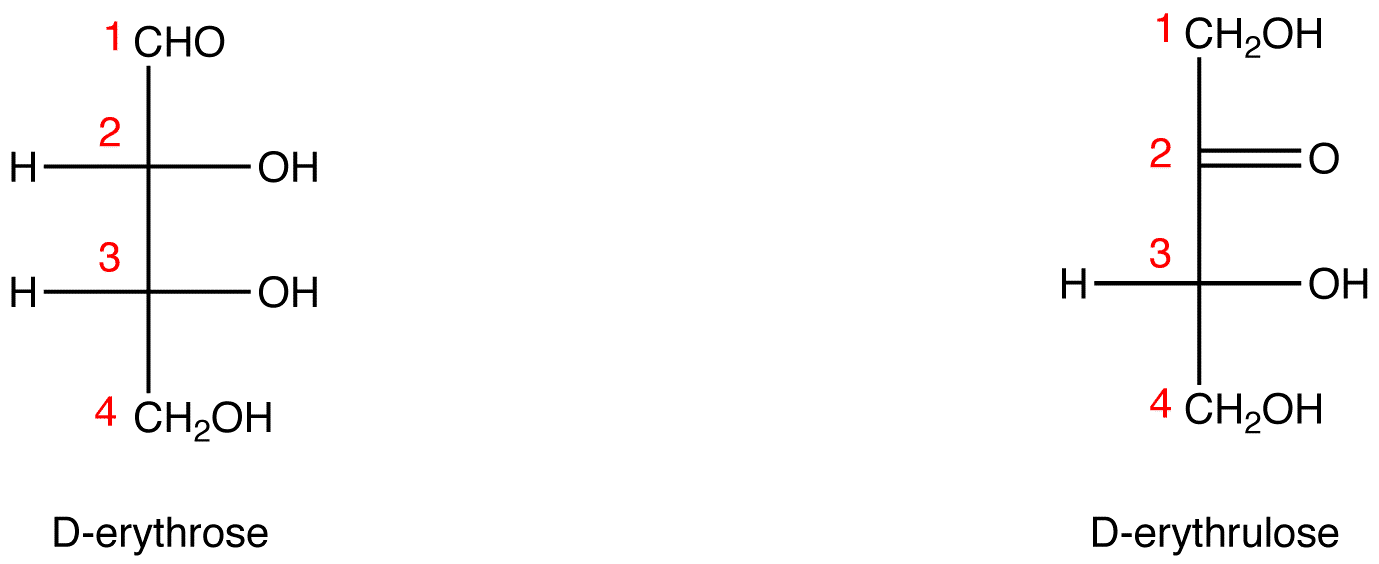 The aldotetroses have two chiral centers ("asymmetric carbon atoms") and so 4 different stereoisomers are possible. There are two naturally occurring stereoisomers, the enantiomers of erythrose and threose having the D configuaration but not the L enantiomers. The ketotetroses have one chiral center and, therefore, two possible stereoisomers: erythrulose (L- and D-form). Again, only the D enantiomer is naturally occurring.
The aldotetroses have two chiral centers ("asymmetric carbon atoms") and so 4 different stereoisomers are possible. There are two naturally occurring stereoisomers, the enantiomers of erythrose and threose having the D configuaration but not the L enantiomers. The ketotetroses have one chiral center and, therefore, two possible stereoisomers: erythrulose (L- and D-form). Again, only the D enantiomer is naturally occurring.
No comments:
Post a Comment